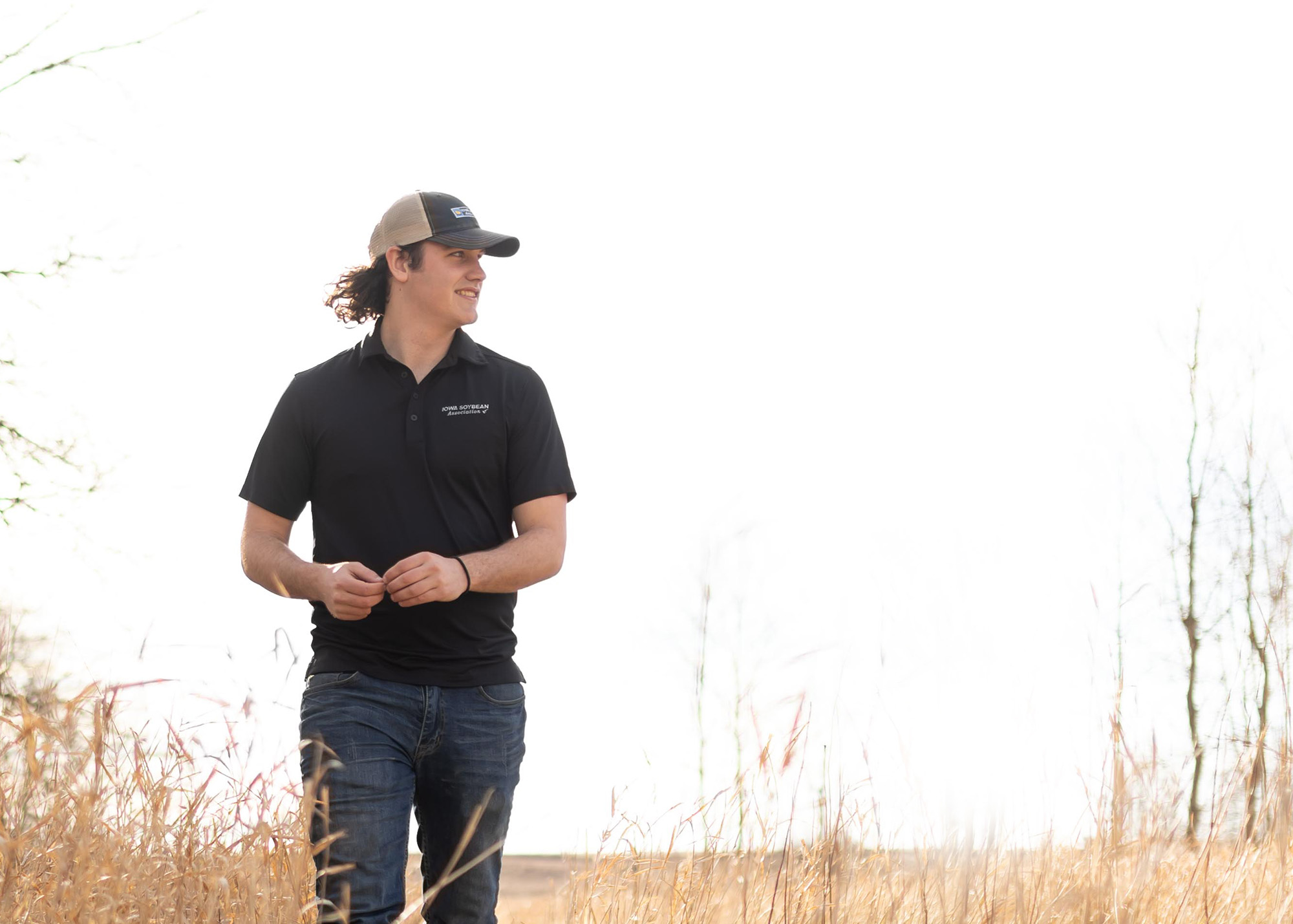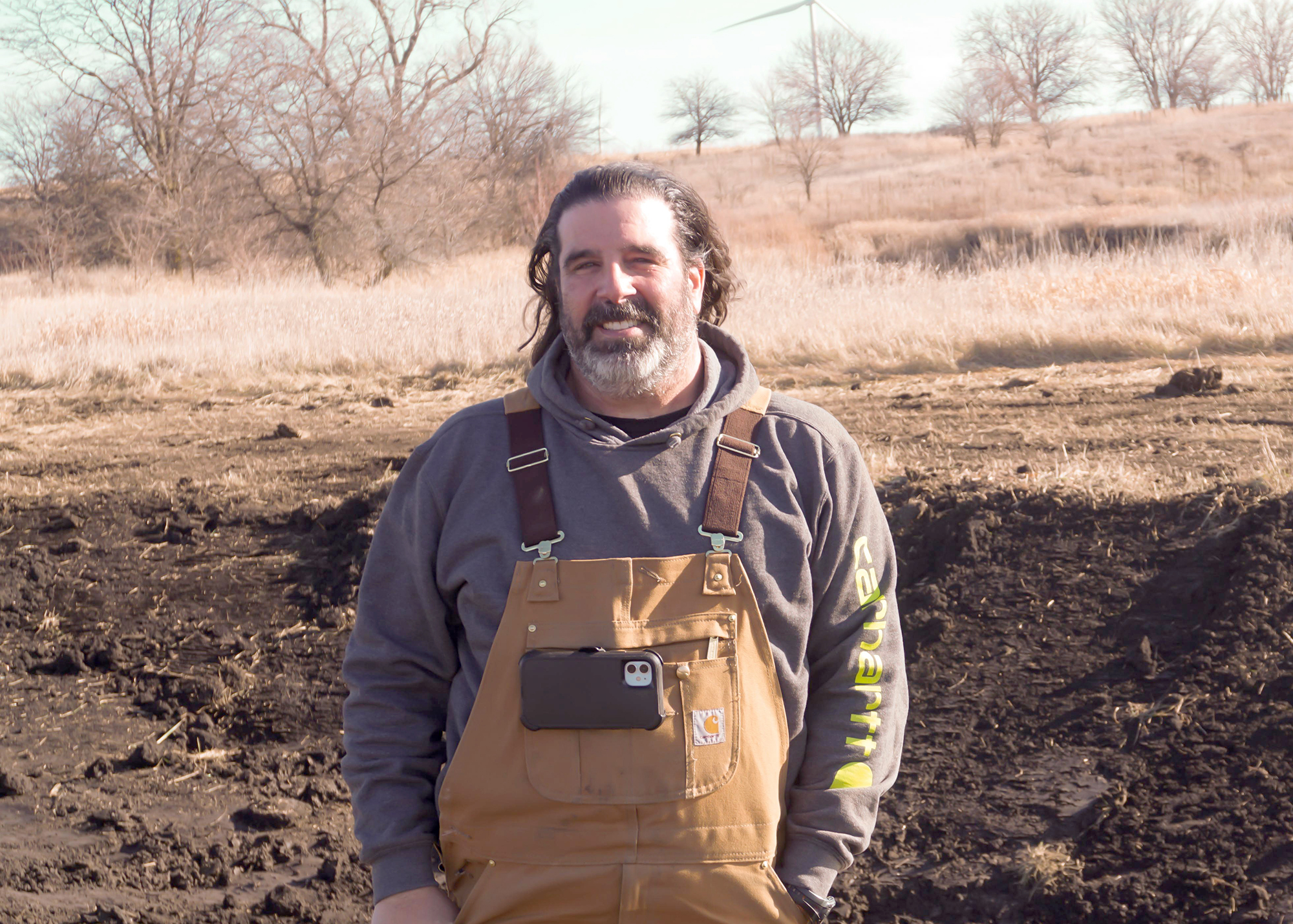
Brandon Iddings, ISA field services program manager for conservation resources, helps connect farmers with the resources to restore oxbows on their land (Photo: Joclyn Bushman/Iowa Soybean Association)
ISA unlocks the benefits of oxbows
January 18, 2022
The Iowa Soybean Association (ISA) is helping farmer members dig for treasure.
The ultimate reward may not be a chest of gold but instead a way to mitigate flooding, prevent nitrates from entering waterways and provide a home to endangered wildlife like the Topeka Shiner.
The “X” marks the spot on former oxbows — the winding, meandering, disconnected pools adjacent a stream that over time become filled with sediment. ISA recently partnered with the U.S. Fish and Wildlife Service (USFWS), to restore seven oxbows located in Greene and Carroll Counties.
“Usually, we don’t pair them like this; it is kind of an unusual project,” says Brandon Iddings, ISA field services program manager for conservation resources. “Three are less than a mile apart in Greene County; the remaining four in Carroll County are a half-mile apart.”
David Ausberger, an ISA member from Greene County who is participating in the restoration effort, says there’s no downside to revitalizing the important habitats. In addition to providing habitat for the Topeka Shiner minnow, the Greene County farmer hoped his restored oxbows would also serve as an essential locale for blue heron, deer and other wildlife.
Ausberger says “It was an easy decision to make with private funding through ISA and cooperation with the Natural Resource Conservation Service (NRCS). I didn’t have to lift a finger,” he says. “I think it’s going to be good for wildlife, and it’s another arrow in my quiver when people say that farmers are just out here mining the land. We’re not,” he says.

David Ausberger, ISA member from Greene County
Getting started
For organizations interested in restoring oxbows, Iddings and USFWS Biologist Darrick Weissenfluh collaborated with the Nature Conservancy to create a 29-page Oxbow Restoration Toolkit now available at nature.org. Iddings says funding is earmarked for more than a dozen oxbows in the Raccoon and Boone River Watersheds.
“Those are our priority areas because the Topeka Shiner is focused in those areas,” Iddings says.
Landowners not in the priority watersheds can get in touch with NRCS and the Iowa Department of Agriculture and Land Stewardship (IDALS).
With a project identified, designed and construction beginning, there are only a few steps to getting an oxbow back in working order. Around four layers of black dirt are removed from the top, often finding a new home in the farmer’s fields. With the black dirt removed, clay and gravel material remains, which is often used to fill washouts. The bottom layer filling in an oxbow is usually old gravel and rocks.
“Once you get to that old stream bed, usually some water starts leaking in,” says Iddings.
For the future
When the seven oxbows are restored, Iddings hopes to increase awareness with farmers and the public due to their visibility near major roadways. He’s planning to host oxbow field days in the future, both aimed at targeted watersheds and for would-be oxbow restorers at-large.
“There are so many benefits,” Iddings says. “It’s great for wildlife and really good at nitrate reduction if you have tile flowing into them. When the floodwaters rise, 42% of the nitrates that go into that oxbow will be removed.” Ausberger has watched the progress on his oxbows and says it’s quite a bit different than when his father took on a solo restoration more than a decade ago.
“The contractor we found made it look a lot easier than my dad did with his old end loader,” Ausberger says. “These guys just knock it right out. It’s going to look good for years to come.”
Back